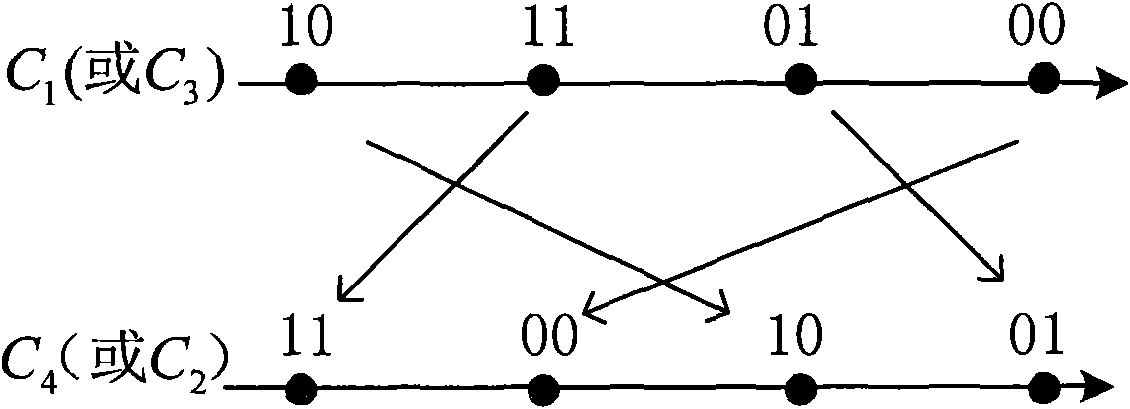Collaboration communication method of high-efficiency frequency spectrum utilization ratio
A cooperative communication and utilization rate technology, applied in the communication between multiple stations, diversity/multi-antenna system, etc., can solve the problem of spectrum utilization rate decline, achieve high spectrum utilization rate, balanced reliability, and improve bit error performance effect
- Summary
- Abstract
- Description
- Claims
- Application Information
AI Technical Summary
Problems solved by technology
Method used
Image
Examples
Embodiment Construction
[0020] Embodiments of the present invention will be described in detail below with reference to the accompanying drawings. This embodiment is implemented on the premise of the technical solution of the invention, and a detailed implementation manner and specific operation process are given, but the protection scope of the present invention is not limited to the following embodiments.
[0021] figure 1 It is a system model diagram of the cooperative communication method with high spectrum utilization rate of the present invention, including two user nodes (A and B) and one destination node (D). Both A and B need to communicate with D, and they are users who cooperate with each other. They can be both source nodes and relay nodes, but not at the same time. When A sends data, B receives A's data as a relay node, and then superimposes its own information on the information that needs to be relayed and sends it out, and vice versa. Among them, h AD 、h BD 、h AB and h BADenote ...
PUM
 Login to View More
Login to View More Abstract
Description
Claims
Application Information
 Login to View More
Login to View More - R&D
- Intellectual Property
- Life Sciences
- Materials
- Tech Scout
- Unparalleled Data Quality
- Higher Quality Content
- 60% Fewer Hallucinations
Browse by: Latest US Patents, China's latest patents, Technical Efficacy Thesaurus, Application Domain, Technology Topic, Popular Technical Reports.
© 2025 PatSnap. All rights reserved.Legal|Privacy policy|Modern Slavery Act Transparency Statement|Sitemap|About US| Contact US: help@patsnap.com



